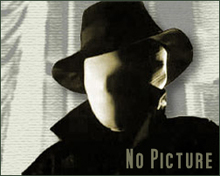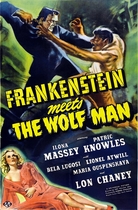Our editor-in-chief Nate Yapp is proud to have contributed to the new book Hidden Horror: A Celebration of 101 Underrated and Overlooked Fright Flicks, edited by Aaron Christensen. Another contributors include Anthony Timpone, B.J. Colangelo, Dave Alexander, Classic-Horror.com's own Robert C. Ring and John W. Bowen. Pick up a copy today from Amazon.com!
Herschell Gordon Lewis
How does a one time Professor of English at the University of Mississippi become a highly celebrated B-movie kings as well as the "Godfather of Gore"? If you are Herschell Gordon Lewis, the transition is not only simple, it’s good business.
H.G. Lewis already had some experience with the film industry through the ownership of several movie theaters in the Chicago area. He also knew his way about a camera; making 30-60 second bits for his clients from his very own advertising agency. But commercials and popcorn wasn't enough to appease Lewis’s artistic and entrepreneurial spirit. So, in the late 50’s together with partner Dave Friedman, Lewis formed "Mid-Continent Films."
H.G. Lewis had started the film company to create what he considered "serious films." Their first endeavor was released in 1960. the movie was called Prime Time and was not very successful. It didn't take Lewis long to shed his artistic integrity (if he actually had one) and after only one more dismal failure realized that he needed a "hook." His business sense acknowledged that he needed a gimmick if he was going to stay afloat in a sea of bad films.
In 1961, Lewis found that gimmick he was after with a "nudie film" he produced called Lucky Pierre. The film turned a profit, and Lewis knew that exploitation films were his initial key to success. Or were they?
By 1963, his films were becoming less of an exotic item. Skin exposure was creeping into the Hollywood scene which meant people would pay their money for not only nude scenes but also good acting and decent plots. Lewis knew it was time to make a decision. He did so in 1963 with his leap into the subject of Gore by releasing Blood Feast.
Blood Feast is considered by far to be the film industry’s first full splatter-movie. Produced, directed, photographed and scored by Lewis; the films was also considered to be his biggest success. Part of the profit margin of Lewis’ movies like Blood Feast can be attributed to extremely low budgets. Blood Feast itself only cost around $70,000 dollars to make. The movie was also shot totally on location Miami. H.G. Lewis apparently had a knack for getting location shots for little or not cost. He was known for hardly ever using an actual set. He did the same with his actors as well. Rather than hire someone to play a police officer, for example, Lewis would simply talk local officers into playing the parts themselves!
Lewis released his next gore follow-up in 1964. With a slightly bigger budget, a higher caliber of acting and even a more gruesome but easier to follow plot - 2000 Maniacs should have put Lewis on his way to horror movie fame. He made an honest effort to promote the film, even going so far as to pen a novelization of his own screenplay; tying in with the film’s release date. However, the public did not react the way H.G. Lewis had originally predicted and the film was a total loss. In fact, Lewis would not see another successful production until his release of She-Devils on Wheels in 1968.
During this time, he also dissolved his partnership with Dave Friedman, who apparently went on to become the President of the Adult Film Association of America. Undaunted and free to work on his own, Lewis sill managed to crank out some pretty bad films. Color Me Blood Red came in 1964 and was closely followed by Monster a-Go-Go in 1965.
The latter film was also known as Terror at Halfday and was produced under Lewis’s pseudonym Sheldon Seymour. The film also had anunusual background story. Apparently Lewis bought the film off of the original director Bill Redbone in hopes of having a "second half" to a film that he had already been working on called Moonshine Mountain (1965). The films did not meet his (low) expectations and he decided to release it as a feature all on its own. With Lewis, or rather Sheldon Seymour’s additional narrative dialogue and a few more close-up shots to "make it more reasonable," Monster-A-Go-Go was released solely to recoup a bad investment. The film remains as, by many leagues, Lewis’s lowest achievement of all time.
By using locations shots and conning locals to work for free, Lewis’s films also gain a sense of realism. If it were not for the terrible plots and outrageous amounts of blood and gore, the films themselves could have taken on some rather creepy aspects. But, much to the chagrin of the movie-going public, Lewis tried to have as much fun with the films as possible. Blending morbid slapstick with gore and splatter, Lewis’ left behind a legacy of shameful but gory films.
In all honesty, it is a bit unfair to call H.G. Lewis a no-talent hack. He had some talent, per se. He just used it in the wrong areas of his professional life. He could pull money out of thin air and work on a shoestring budget. He could also properly promote and release nearly nonexistent films. It certainly wasn't the ambition and lust for making films that made Lewis’s movies damned near intolerable. It was simply the industry's standards that kept his films at the bottom of the barrel. Bad acting, low quality and terrible scripts are the only complaints that any H.G. Lewis fan will have about his movies. Other than that, his films are rare and exciting gems in an otherwise unpure and overrated genre.








